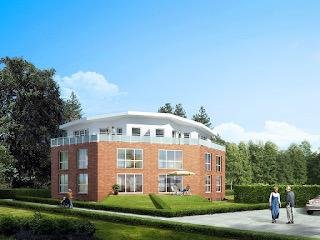Benefits of Green Spaces for Communities
Urban green spaces play a vital role in enhancing public health and well-being. As cities grow and daily life becomes increasingly fast-paced, these natural pockets offer much more than scenic beauty. They help local residents manage their health and strengthen their social bonds. In this article, we’re going to take a closer look at the benefits of green spaces for local communities. We’re also going to look at how nature-first design and community-led development can help create more green spaces in urban areas.
3 Benefits of Green Spaces for Communities
Research has shown green spaces offer many benefits for local communities – from improving individual health to supporting social cohesion. As such, green spaces can help create healthier, more connected urban environments.
1. Improved Health
Exercise in urban green spaces comes with many physical health benefits. Research has shown that exercise in urban green spaces is often associated with improvements in cardiovascular health, such as reductions in blood pressure, HR, and HRV. Physical activity in urban green spaces comes with many mental health benefits. For example, research has shown that exercise in urban green spaces is also associated with better mood, better self-esteem, and higher perceived restoration. Community-level studies have shown similar benefits. For example, a systematic review published in Environmental Health Perspectives examined multiple studies and found that engaging in physical activities within urban green spaces is associated with both improved physical and mental health among community members.
2. Improved Wellbeing
Visiting urban green spaces can reduce stress. Research indicates that even brief periods in nature can lead to measurable improvements in well-being. For instance, a study highlighted by Harvard Health found that a 20-minute nature break can significantly lower stress hormone levels, leading to enhanced relaxation and mood. Similarly, research from the University of Michigan demonstrated that spending just 20 to 30 minutes in a natural setting can reduce cortisol levels by approximately 21%. Community-level studies support these findings. For example, research also indicates that residents of urban areas with greater access to green spaces report lower levels of mental distress and higher life satisfaction.
3. Social Integration
Green spaces support community engagement and social integration. This is because they offer spaces where people can meet, interact, and engage in activities together, thereby creating a strong sense of community. For example, a review by The University of Sheffield emphasises that urban green spaces contribute to social integration by encouraging interactions among diverse groups, thereby creating a sense of belonging. And a study by Forest Research highlights that green infrastructure can increase social activity, improve community cohesion, and develop local attachment, particularly in deprived communities.
4. Educational and Recreational Opportunities
Urban green spaces offer valuable educational and recreational opportunities for people of all ages, especially children and young people. These natural environments provide a living classroom—ideal for outdoor learning, environmental education, and hands-on exploration. For example, schools, nurseries, and community groups can use green spaces to teach children about biodiversity, ecosystems, and sustainability in a direct and engaging way. Beyond formal education, green spaces also offer children and young people the opportunity to interact with others in safe, stimulating environments.
Creating Green Spaces for Communities
As you can see, green spaces offer a wealth of opportunities for local residents, from easy access to outdoor exercise to increased social connections. The question is, who is responsible for creating green spaces? And what can we do to increase the number of green spaces available in urban areas? Let’s explore this further.
Working Together To Create More Green Spaces
Green spaces require careful planning, ongoing investment, and maintenance. They also require ongoing collaboration and support from various stakeholders, including:
Together, these types of organisations help ensure that green spaces are accessible, sustainable, and responsive to the needs of the communities they serve.
Prioritising Green Infrastructure and Nature-First Design
To deliver meaningful green spaces, planners and developers must prioritise green infrastructure and nature-first design. Involving masterplanners, like JTP, in the planning process helps ensure that green spaces meet environment and sustainability needs. When designed with nature at the core, green spaces can maximise the use of existing landscape, and help preserve existing natural features. That way, they offer local communities a true connection with nature. When designed with sustainability at the core, green spaces can also improve air quality, enhance urban cooling, and support biodiversity. That way, they offer local communities a more vibrant, environmentally-friendly city place to live.
Focusing on Community-Led Planning and Development
To deliver meaningful green spaces, planners and developers must also work closely with local communities to understand their needs and priorities. Involving residents in the planning process helps ensure that green spaces reflect the identity and values of the people who use them. When designed with community at the core, green infrastructure becomes more than just a backdrop it becomes a vital, lived part of the neighbourhood, supporting both environmental goals and social wellbeing for generations to come.
Final Thoughts
Urban green spaces are vital for the health, happiness, and cohesion of local communities. As we’ve seen, they offer a wide range of benefits, from supporting mental and physical wellbeing, to creating spaces for connection and belonging. But these spaces don’t happen by chance. They require thoughtful planning, sustained investment, and meaningful collaboration between local authorities, developers, community groups, and residents.
By putting nature and people first through green infrastructure and community-led design we can ensure that green spaces are not only well-used but truly valued. When done well, they become central to everyday life: places to relax, gather, and grow. As our cities continue to evolve, prioritising green spaces is not just a nice-to-have it’s a necessary step toward building more sustainable, inclusive, and liveable urban environments for everyone.







